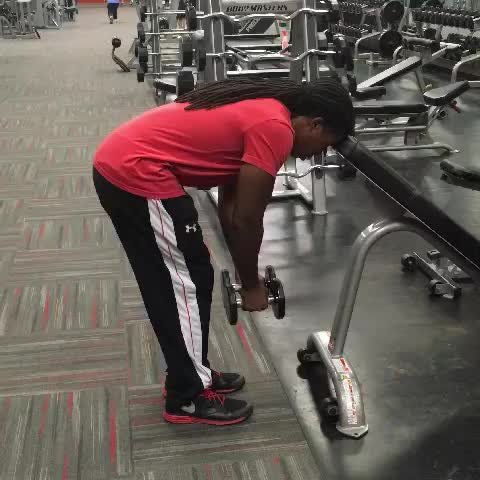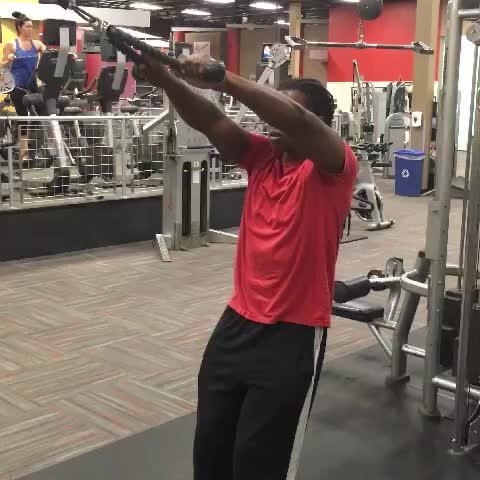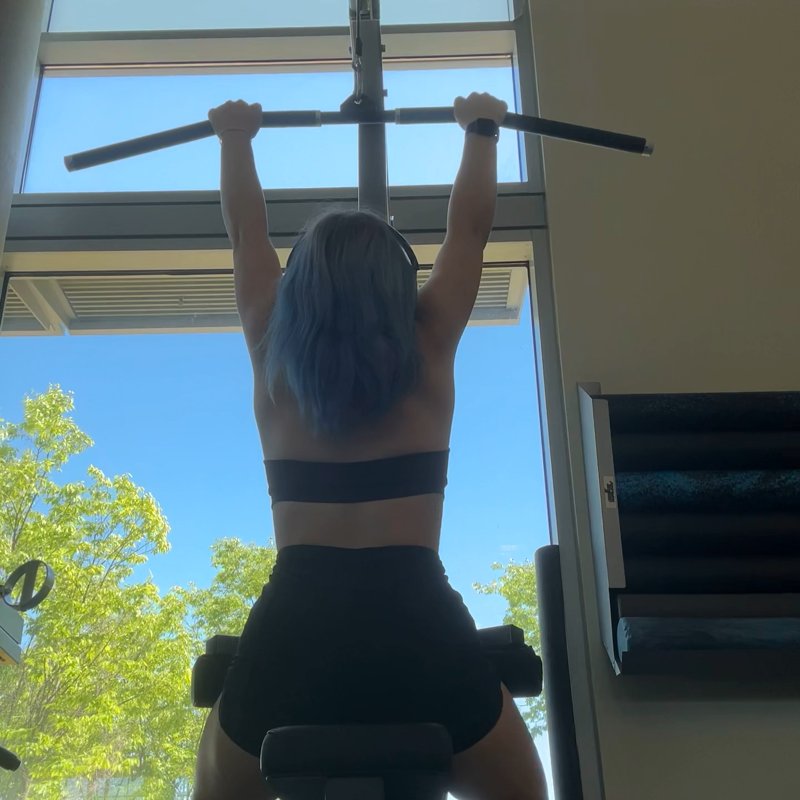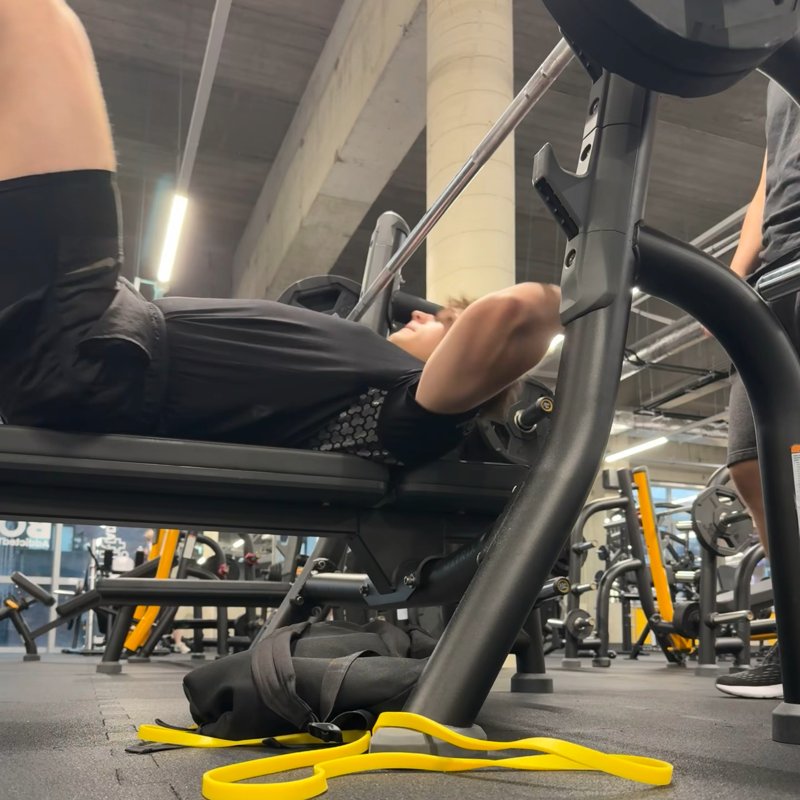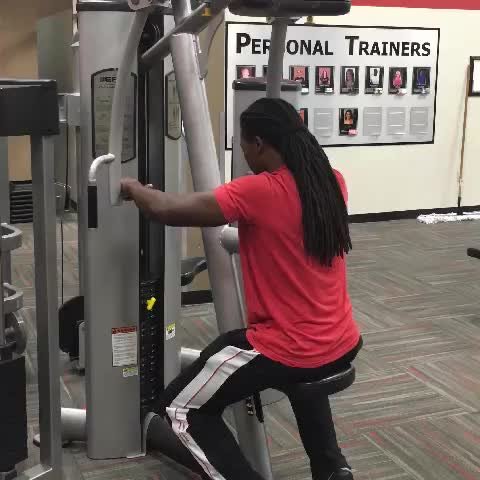Cable Reverse Fly: The Ultimate Guide
The Cable Reverse Fly is an isolation exercise that targets the posterior deltoids, rhomboids, and middle trapezius by pulling cable handles outward and back in a horizontal abduction movement, providing constant tension throughout the range of motion.

Quick Facts
Key Benefit
Targeted posterior deltoid development with continuous tension
Primary Muscles
Posterior Deltoids, Rhomboids, Traps
Secondary Muscles
Abdominals, Brachialis, Lats
Equipment
cable machine
Difficulty
Beginner
Type
Strength
In This Guide
Ready to master the Cable Reverse Fly?
Track your progress, see improvements over time, and build strength consistently.
Download GravitusThe Cable Reverse Fly stands as one of the most effective exercises for developing the often-neglected posterior deltoids—the rear portion of the shoulder muscles critical for balanced shoulder development, proper posture, and injury prevention. Unlike many pushing exercises that emphasize the anterior (front) delts, this movement specifically targets the pulling muscles that counter everyday forward-rounded shoulder positions.
What makes the cable variation particularly valuable is its constant tension profile. While dumbbell reverse flies lose resistance at certain points in the range of motion due to gravity, cables maintain consistent tension throughout the entire movement. This maximizes time under tension and potentially increases muscle fiber recruitment, particularly at the fully contracted position where the rear delts are maximally shortened.
Beyond aesthetic benefits, strengthening the posterior deltoids and associated muscles like the rhomboids and middle trapezius contributes significantly to improved posture, enhanced shoulder joint health, and reduced risk of injuries in both athletic endeavors and daily activities. The rear delts play crucial stabilizing roles during pressing movements, and their development can improve performance across numerous upper body exercises.
Whether you're looking to create balanced shoulder development, improve posture compromised by modern lifestyles, rehabilitate from certain shoulder issues, or simply add definition to your upper back, the Cable Reverse Fly provides an effective and joint-friendly approach that can be scaled to any fitness level.
Benefits of Cable Reverse Flys
The Cable Reverse Fly offers several unique advantages that make it a valuable addition to any upper body training program.
Targeted Rear Deltoid Development
Specifically isolates the posterior deltoids, which are often underdeveloped relative to the middle and front portions of the shoulder.
Constant Tension
The cable mechanism provides continuous resistance throughout the entire range of motion, maximizing time under tension and muscle fiber recruitment.
Improved Posture
Strengthens the muscles responsible for proper shoulder positioning, helping to counter the forward-rounded shoulder position common in modern lifestyles.
Shoulder Joint Health
Develops the antagonist muscles to pressing movements, creating balanced strength around the shoulder joint that may reduce injury risk.
Scalable Intensity
Allows precise resistance adjustment to accommodate any fitness level, from rehabilitation purposes to advanced strength development.
Proper Form & Technique
Setup
- Position two cable pulleys at approximately shoulder height or slightly higher.
- Select appropriate handles—typically D-handles or small stirrup handles work best.
- Stand in the center between both cable stations with feet approximately shoulder-width apart.
- Grab the left pulley with your right hand and the right pulley with your left hand, crossing the cables in front of you.
- Step back until there is tension on the cables with your arms extended forward at shoulder height.
- Position your torso with a slight forward lean from the hips, maintaining a neutral spine.
- Keep a soft bend in your knees for stability throughout the movement.
- Draw your shoulder blades slightly down and back as a stable starting position.
- Maintain a neutral neck position aligned with your spine, avoiding forward head posture.
Movement
- Keeping your arms mostly straight with a slight elbow bend, initiate the movement by drawing your arms outward and back.
- Focus on squeezing your shoulder blades together as you pull, emphasizing rear deltoid contraction.
- Maintain the slight forward lean throughout the movement without arching your lower back.
- Continue the outward arc until your arms are extended out to your sides, forming a T-position with your torso.
- For maximum rear deltoid engagement, bring your hands slightly behind the plane of your body at the end range.
- Hold the contracted position briefly, focusing on squeezing the rear deltoids.
- Slowly return to the starting position with control, resisting the pull of the cables.
- Maintain tension throughout the movement without allowing the weight stacks to touch down between repetitions.
- Exhale during the pulling phase and inhale during the return phase.
Key Form Tips
Elbow Position
Maintain a slight bend in your elbows (approximately 10-15 degrees) throughout the entire movement, keeping this angle consistent during both phases.
Shoulder Blade Control
Focus on squeezing your shoulder blades together during the pulling phase, enhancing rear deltoid activation and proper biomechanics.
Torso Stability
Keep your core engaged and torso position stable throughout the movement, avoiding the tendency to swing or change the degree of forward lean.
Controlled Movement
Resist using momentum to move the weight, instead focusing on muscle contraction to drive the movement with deliberate control.
Range of Motion
Find the range that maximizes rear deltoid activation without compromising form or creating discomfort in the shoulder joint.
Muscles Worked
Primary Muscles
- posterior deltoids: The rear portion of the shoulder muscles, primarily responsible for horizontal abduction of the arm and the main target of this exercise.
- rhomboids: The muscles between the shoulder blades that assist with scapular retraction during the pulling movement.
- traps: The middle and lower portions of the trapezius muscle that work to retract the shoulder blades and contribute to proper shoulder blade positioning during the movement.
Secondary Muscles
- infraspinatus: This rotator cuff muscle assists with arm positioning and shoulder joint stabilization during the movement, particularly with external rotation of the shoulder.
- lats: The upper/outer portion of the large back muscle that assists during the pulling phase.
- brachialis: The deep arm muscle that works isometrically to maintain the elbow position throughout the exercise.
- abdominals: Engage isometrically to maintain proper posture and stability throughout the movement.
Common Mistakes and How to Fix Them
Using Excessive Weight
Selecting a weight that's too heavy, leading to compromised form, reduced rear deltoid activation, and potential shoulder compensation. Choose a weight that allows for proper form throughout the entire set, particularly maintaining the ability to squeeze the shoulder blades together at the contracted position. Remember that the posterior deltoids are relatively small muscles compared to other major muscle groups and typically respond better to moderate weights with perfect execution. If you cannot maintain proper shoulder positioning or find yourself using momentum, reduce the weight until quality movement can be maintained. Consider implementing a systematic progression where form and contraction quality take precedence over simply increasing weight.
Rounded Shoulders
Performing the movement with rounded shoulders and forward head posture, which reduces rear deltoid activation and reinforces poor positioning. Focus on setting your shoulder blades down and slightly back before initiating each set, creating a stable foundation. Consciously maintain this position throughout the movement rather than allowing the shoulders to roll forward, particularly during the return phase. Consider performing specific activation exercises for the mid-back muscles before cable reverse flys to enhance positional awareness. If necessary, perform the exercise facing a mirror initially to provide visual feedback on shoulder positioning until proper form becomes habitual.
Using Momentum
Swinging the torso or using body movement to assist with the pulling phase, reducing muscle activation and increasing joint stress. Slow down the entire movement, implementing a deliberate tempo (e.g., 2 seconds out, 1 second squeeze, 3 seconds return). Maintain a stable torso position throughout, using core engagement to prevent swinging. If momentum is necessary to complete the movement, the weight is likely too heavy. Consider practicing isometric holds at the contracted position to develop positional awareness and strength in the target muscles without momentum assistance.
Excessive Elbow Bend
Significantly bending the elbows during the movement, which shifts emphasis toward the upper back and reduces rear deltoid focus. Maintain a consistent slight bend in your elbows (approximately 10-15 degrees) throughout the entire movement. This bend should remain the same from start to finish, not increasing during the pulling phase. Focus on initiating the movement from the shoulder joint rather than by flexing the elbows. If maintaining this position is difficult, temporarily reduce the weight until proper arm positioning becomes more natural. Consider the analogy of your arms as rigid "cables" themselves that maintain their shape while your shoulders do the work.
Insufficient Range of Motion
Not bringing the arms far enough back at the contracted position or not returning to a proper starting position, limiting muscle development. Focus on achieving maximum rear deltoid contraction at the end range by bringing your hands slightly behind the plane of your body at the peak of the movement. Ensure you return to a position with arms extended forward to create a complete stretch in the posterior deltoids at the starting position. Implement specific range of motion drills without weight to develop awareness of optimal positions. Consider using lighter weight temporarily if achieving full range with control is challenging.
Cable Reverse Fly Variations
Position Variations
-
One-Arm Cable Reverse Fly
Performing the movement one arm at a time, which can help address muscle imbalances and increase focus on unilateral development.
-

Low To High Cable Reverse Fly
Setting the pulleys at a lower position and pulling upward and back, creating a diagonal movement pattern that targets slightly different portions of the rear deltoid.
-

High To Low Cable Reverse Fly
Setting the pulleys above shoulder height and pulling downward and back, which can increase lower trapezius engagement along with the rear delts.
-
Seated Cable Reverse Fly
Performing the movement while seated on a bench, which can increase stability and help isolate the shoulder movement from the rest of the body.
Technical Variations
-

Cable Reverse Fly with External Rotation
Adding a rotational component at the end of the movement where the thumbs turn upward, increasing rotator cuff involvement.
-

Pulsing Cable Reverse Fly
Performing small, pulsing partial repetitions at the fully contracted position to increase time under tension and metabolic stress.
-

Isometric Hold Cable Reverse Fly
Holding the contracted position for an extended period (10-30 seconds) to build endurance and improve mind-muscle connection.
-

Eccentric-Focused Cable Reverse Fly
Emphasizing the return phase by taking 4-5 seconds to lower the weight with control, potentially increasing muscle damage and growth stimulus.
Frequently Asked Questions
Both cable and dumbbell reverse flys effectively target the posterior deltoids, but they offer distinct advantages that make them complementary rather than competing exercises in a comprehensive shoulder training program.
The primary mechanical difference is in the resistance profile: Cable reverse flys provide consistent tension throughout the entire range of motion due to the pulley system. The resistance remains challenging even at the peak contracted position, which is often when the rear deltoids are maximally activated. Dumbbell reverse flys are subject to gravity's vertical force, creating a variable resistance pattern where the movement is most challenging when the arms are parallel to the floor and becomes easier at the fully contracted position.
This difference in resistance profile affects muscle stimulation: Cable variations typically create greater tension at the contracted range, potentially maximizing rear deltoid activation at peak contraction. Dumbbell variations often create more tension in the mid-range of the movement where the lever arm against gravity is longest.
From a practical standpoint: Cable reverse flys require specialized equipment (cable machine with adjustable pulleys) but allow for more precise resistance adjustment and variety in angle of pull. Dumbbell reverse flys can be performed with minimal equipment, making them more accessible for home workouts or crowded gyms.
In terms of body positioning: Cable reverse flys are typically performed standing, which may incorporate more core stabilization but can also allow for more potential body momentum. Dumbbell reverse flys are commonly performed in bent-over positions (standing, seated, or prone on an incline bench), which can provide more stability but may be challenging for those with lower back issues.
The ideal approach for most trainees is to incorporate both variations in their training program, either by alternating between sessions or including both within a comprehensive shoulder workout. Cable variations might be emphasized when seeking maximum tension at the contracted position, while dumbbell variations might be preferred when equipment access is limited or when greater mid-range tension is desired.
The appropriate weight for cable reverse flys depends on your training experience, current strength level, and most importantly, your ability to maintain proper form throughout the movement. The posterior deltoids are relatively small muscles compared to many other muscle groups, making exercise technique and mind-muscle connection particularly crucial for effective development.
As a general guideline, select a weight that allows you to complete your target repetitions with proper form while still finding the last 2-3 reps challenging. For most lifters, this means starting with lighter weight than you might initially expect—often much lighter than what you would use for exercises targeting larger muscle groups.
The key indicators that your weight selection is appropriate include: You can maintain a slight (but consistent) elbow bend throughout the movement. You can fully retract your shoulder blades at the contracted position. You feel the work primarily in your rear deltoids rather than your traps or arms. You can control the weight without momentum or body swinging throughout the entire range of motion.
For optimal development, many successful trainees find that moderate weights with perfect execution produce better results than heavier weights with compromised form for this particular exercise. Focus on quality of contraction over quantity of resistance.
A systematic approach to progression might include: Mastering form with lighter weight (12-15 repetitions per set) before adding resistance. Gradually increasing weight while maintaining the same repetition range. Implementing varied protocols like tempo manipulation, paused reps, or mechanical advantage changes before simply adding more weight.
Remember that exercise execution quality typically yields better rear deltoid development than simply moving heavier weights with reduced form integrity. The posterior deltoids respond well to proper stimulation at appropriate volumes rather than maximal loading.
The optimal frequency for training rear deltoids with cable reverse flys depends on your overall training program structure, recovery capacity, and specific goals regarding shoulder development.
For most recreational lifters following a body-part split routine, directly training rear deltoids 2 times per week provides sufficient stimulus while allowing adequate recovery between sessions. For those following an upper/lower or push/pull/legs split, rear delts are typically trained during each "pull" session, which usually occurs 2 times per week.
Several factors should influence your individual frequency: Your current shoulder balance and development needs - if rear delts are significantly underdeveloped, they might benefit from more frequent, focused work. Your overall training volume - consider the total work your rear delts receive from all exercises, not just reverse flys. Your recovery capacity - if you're experiencing persistent soreness that doesn't resolve before the next training session, you might need to reduce frequency temporarily.
Remember that the posterior deltoids are also indirectly worked during many upper back exercises like rows and face pulls. When planning frequency, account for this indirect volume that contributes to total rear deltoid training stimulus and recovery demands.
For those specifically prioritizing rear deltoid development to correct imbalances or improve shoulder health, implementing a higher frequency approach might be beneficial: Consider including 3-4 weekly sessions of direct rear deltoid work. Use varied intensities and volumes across different sessions (e.g., heavier/lower reps one day, lighter/higher reps another) to manage fatigue. Include cable reverse flys as just one of several rear deltoid exercises rather than performing the same movement pattern repeatedly.
Regardless of frequency, ensure systematic progression by gradually increasing challenge through weight, repetitions, sets, or execution quality. Monitor your response to the selected frequency and adjust as needed based on progress and recovery.
Cable reverse flys can potentially help with certain types of shoulder discomfort by addressing common muscular imbalances, but their appropriateness depends entirely on the specific nature and cause of the shoulder pain. This exercise should never be used as a self-prescribed treatment for undiagnosed shoulder conditions.
For certain common scenarios, strengthening the posterior shoulder can be beneficial: Many individuals develop anterior (front) shoulder dominance due to daily activities and exercise selections that emphasize pushing over pulling. This imbalance can create forward-rounded shoulders and potentially contribute to impingement-type symptoms. Cable reverse flys specifically target the posterior deltoids and scapular retractors, which can help restore balance around the shoulder joint when these muscles are relatively underdeveloped.
However, not all shoulder pain responds positively to this exercise: If the pain is related to specific conditions like rotator cuff tears, labral injuries, or certain types of impingement, the movement pattern might exacerbate symptoms rather than improve them. The specific range of motion, load, and execution details need careful consideration based on individual circumstances.
If you're dealing with shoulder pain and considering cable reverse flys as part of a rehabilitation approach, consider these guidelines: Consult with a healthcare professional (physical therapist, sports medicine physician) for proper diagnosis and individualized recommendations. Start with very light resistance and a pain-free range of motion, gradually progressing as appropriate. Pay particular attention to scapular positioning and movement quality rather than weight or repetitions. Consider modifications like reducing range of motion or adjusting arm angles to find pain-free variations. Incorporate this exercise as just one component of a comprehensive approach to shoulder health that includes mobility work, rotator cuff strengthening, and proper movement patterns.
When appropriately implemented as part of a professionally guided program, cable reverse flys can be a valuable tool for improving posterior shoulder strength and function, potentially contributing to better shoulder health and reduced discomfort over time.
Video Demonstrations
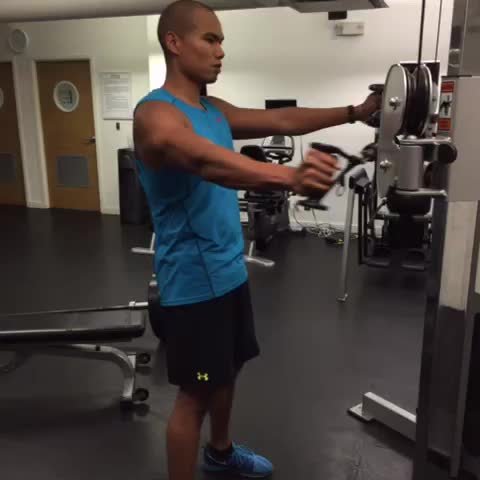
Log in to watch video demonstrations
Login to Watch3 video demonstrations available
Tips from the Community
-

Align cables shoulder height
-

Focus on scapular retraction while “sweeping” the weight out laterally
-

Remove attachments and hold ball for neutral grip
-

Palms facing down and squeeze your shoulders when you pull back
Track your progress with Gravitus
Download Gravitus to log your workouts, track your progress, and join a community of fitness enthusiasts.

Helpful Resources
One Rep Max Calculator
Find your one rep max for any exercise without maximal testing. Essential for developing effective strength training programs.
Calculate 1RMWorkout Programs
Follow structured workout programs created by fitness professionals to maximize your strength and muscle gains.
View Programs
